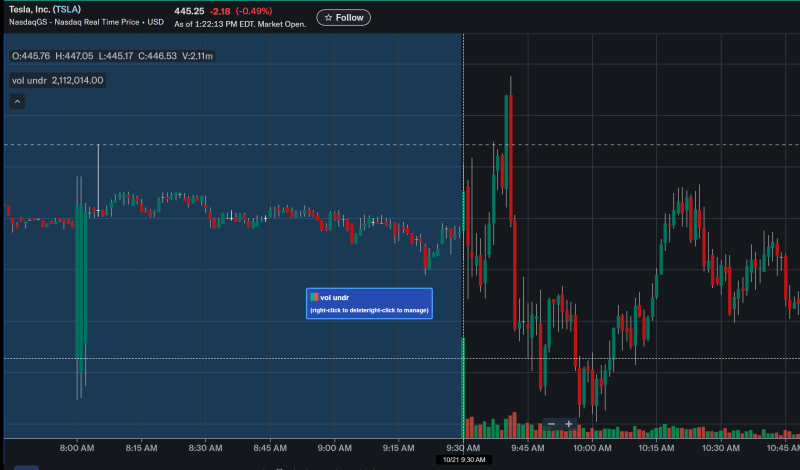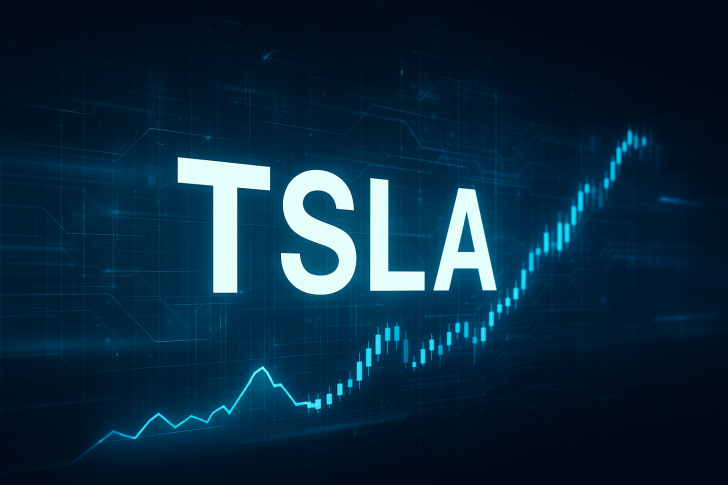Tesla's opening bell on Monday told an interesting story. Right at 9:30 AM, over 2.1 million shares changed hands in a single burst—the biggest volume spike of the entire session. This kind of action usually means one thing: institutions are making their move.
According to analysts at Naqdi, a Dubai-based forex and CFD broker, such early-session bursts often signal institutional accumulation when traders anticipate strong upcoming earnings or macro shifts.
What the Chart Shows
With earnings just around the corner, most retail traders are sitting on the sidelines, nervous about potential volatility. But the smart money seems to be thinking differently. As trader @StockMarketMcro put it: "Large dogs won't buy a stock just one day before earnings knowing the report will be bad."

The stock opened around $445.76 and stayed in a tight range throughout the morning, closing slightly down at $445.25. But the real story wasn't the price—it was that massive green volume bar right at the open. Even as the stock dipped slightly during the session, it held support near $445, showing that buyers were defending that level.
Key technical points:
- Opening volume spike of 2.1M shares signals institutional accumulation
- Price holding steady between $445-$447 despite broader market weakness
- Support zone around $442-$445 where big money appears to be positioned
- Breakout potential above $450 if earnings surprise to the upside
Why Institutions Are Buying
The confidence likely comes from Tesla's expanding business beyond just cars. The AI and robotics push, energy storage growth, and new products like the Cybertruck are diversifying revenue streams. While retail investors see uncertainty, institutional players seem to see opportunity at current prices—especially with the stock still well below its all-time highs.
There's also a classic market dynamic playing out here. When retail gets scared and backs away, that's often when the professionals step in and accumulate shares quietly. The volume doesn't lie—someone with deep pockets was buying aggressively at the open.
This pre-earnings setup looks less like panic and more like strategic positioning. If Tesla delivers even a decent earnings report, that $450 resistance could break quickly as short sellers scramble to cover and momentum traders jump back in.
The gap between retail fear and institutional action is rarely this obvious. For those paying attention to what the big money is actually doing rather than what the headlines say, the message seems clear: they're buying, not running away.
 Usman Salis
Usman Salis

 Usman Salis
Usman Salis


